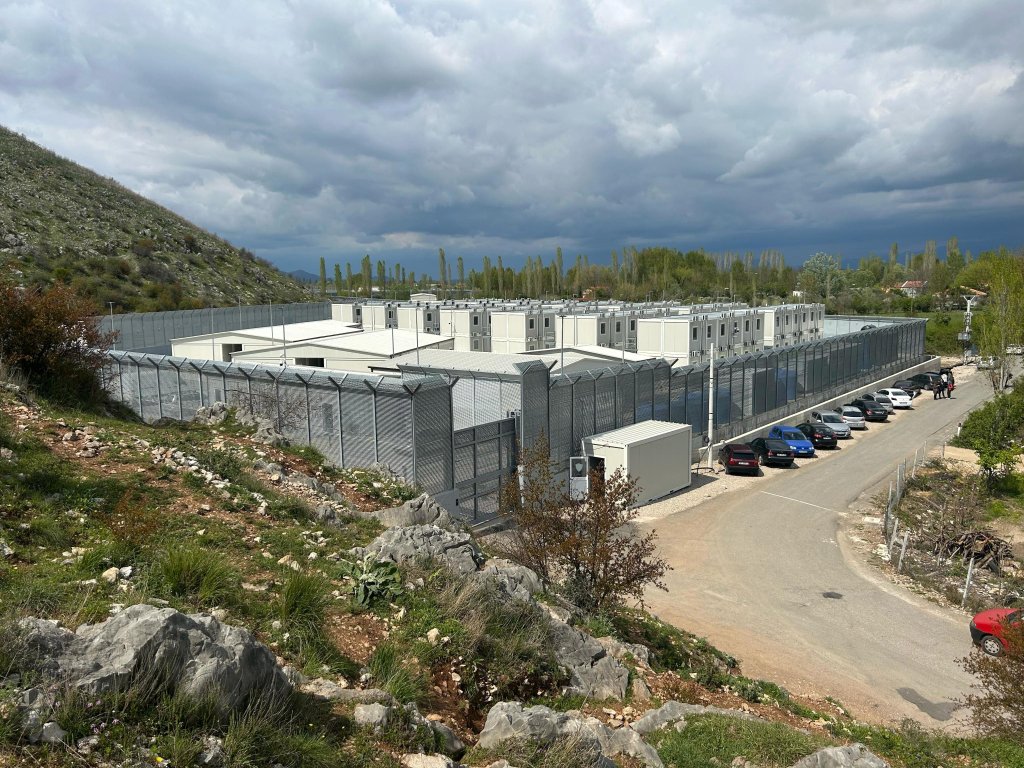A second group of rejected asylum seekers has been sent to Albania, according to Italy's government. Last month, 40 people were transferred, marking the first time an EU country sent rejected asylum seekers to a non-EU nation.
Italy transferred 26 migrants to Italian-run detention centers in Albania, authorities said on Tuesday (May 28), marking another attempt to implement a controversial bilateral agreement to outsource asylum processing.
No details about the passengers, such as their nationalities, have been released.
The Italian navy ship Spica reportedly transferred the 26 people from the port of Brindisi, southern Italy, to the Albanian port city of Shëngjin.
From Shëngjin, passengers are typically transferred to a second facility in Gjader, located about 20 kilometers inland. Both centers are operated by Italian personnel and were initially constructed to process asylum seekers intercepted in the Mediterranean en route to Europe.
Forty migrants sent to Albania, several returned since
Last month, Italy sent forty migrants it considers eligible for deportation to its centers in Albania. The passengers were all reportedly male and were set to remain in detention in Albania until their deportation is carried out.
Since then, several men have returned to Italy. In one case, a court ruled against the Italian government, saying that foreigners who have applied for international protection could not be sent to Albania. Another man was sent back to Italy because of mental health issues which made him "unfit to live in a restricted community".
It is unclear how long those still at the center will remain in Albania. Under Italian law, failed asylum seekers can be held for a maximum of 18 months awaiting deportation.

The April 11 transfer was reported to be the first time an European Union member state sent people whose asylum applications had been rejected to a non-EU nation and to a country that they had not passed through on their journey.
Tavolo Asilo e Immigrazione (TAI), a coalition of migrant policy organizations, reported witnessing multiple troubling incidents related to the April transfer of the rejected asylum seekers.
In a public statement, TAI reported acts of self-harm among detainees, restricted access to legal assistance, and a lack of clear communication about the forced transfers. The group also condemned the use of "undignified" transportation methods and cited one instance where migrants were disembarked with their hands tied.
In addition, TAI criticized the criteria used to select the 40 people transferred to the Gjader facility, saying that they were unclear and vague.
Read AlsoItaly sends 40 rejected asylum seekers to Albania
Turned into detention centers after court rulings
Italy's asylum processing centers in Albania have been the subject of legal and political controversy since their opening in October 2023. Italian courts have repeatedly blocked attempts to use the facilities, ruling in favor of returning detainees to Italy. Rights groups have also raised concerns about conditions and access to legal protections.
Initially, the centers were created to house asylum seekers during a 'fast-tracked' application process, specifically for people rescued in the Mediterranean from what the Italian state considers 'safe countries of origin' who were deemed 'non-vulnerable'. However, after multiple court rulings ordered asylum applicants housed in Albania to be returned to Italy, the Italian government changed the purpose of the facilities to repatriation centers (also called CPRs in Italy). These centers typically detain people after their asylum claims have been rejected, ahead of a deportation.
Read AlsoHas Italy's Albania migrant deal completely failed?
